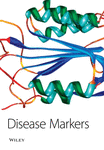On Chip Immuno-Affinity Profiling of Cancer- and Benign Hyperplasia-Associated Free Prostate Specific Antigen
Abstract
Prostate specific antigen (PSA) exhibits pronounced heterogeneity in both primary structure and glycan composition, resulting in the existence of different molecular forms. Investigation of PSA structure is a demanding task facing limitations due to inadequate sensitivity of analytical techniques and low concentrations of the different forms. This study aimed to profile free PSA (fPSA), especially lower molecular mass species lacking detailed classification, in normal seminal plasma and in sera from subjects with benign hyperplasia (BPH) or cancer of the prostate (PCa) as samples of known clinical relevance. fPSA forms were separated from complex proteomes on chips with immobilized anti-fPSA antibody followed by detection using surface-enhanced laser desorption/ionization time of flight mass spectrometry. At least 39 fPSA-immunoreactive species, ranging from 3–29 kDa were detected in seminal plasma. General fPSA profiles in seminal plasma and sera were similar, but differed in the abundance and presence of particular peaks/clusters of the lower molecular mass species. No striking difference in fPSA forms was observed between BPH and PCa samples, but some distinct peaks varied in intensity and frequency within or between groups. Obtained data verify fPSA heterogeneity that might be important for better exploration of all their molecular and marker potentials.




